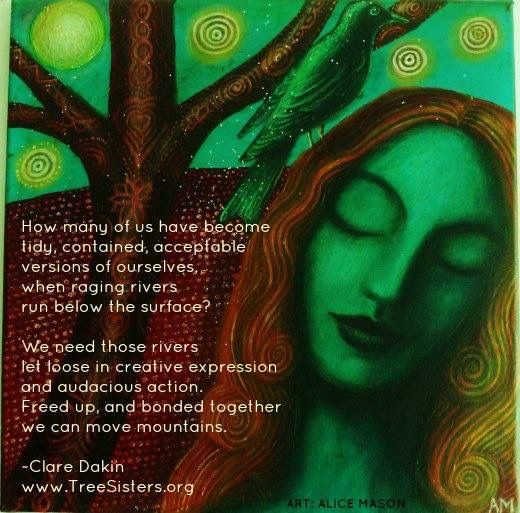
But if the sacred feminine doesn’t have anything to do with gender, why do we use gendered terms to explain it? We don’t have to! Systems built upon such beliefs fail to actually account for the wide range of human experience that lends to the balance of our communities. To base our spirituality in how our body is shaped is inherently exclusionary and limiting. It’s not body parts or reproductive function that leads to femininity, nor is it the other way around. "Some see worship of a Goddess as helping to rebalance negative cultural issues brought about by centuries of emphasis on a male God,” Hale says. Hale notes that in patriarchal Abrahamic religions, such as Catholicism, the Divine Feminine suggests a female component within the Trinity (some sects even acknowledge the Holy Spirit as feminine). In Hinduism, Goddesses are still worshipped and Tantric Buddhism and Tantric Hinduism both have a specific focus on female deities.”ĭr. Goddesses were worshipped extensively in older polytheistic religions, and are heavily represented in Roman, Greek, African and Egyptian contexts. “Of course, what we call 'The Divine Feminine’ has a number of modern manifestations and a long religious history worldwide.


“I would argue that general popular references to ‘The Divine Feminine’ today exist within a context of working to redress perceptions of a gendered spiritual imbalance,” says Amy Hale, an Anthropologist and Folklorist who has written extensively on Pagan and esoteric spiritualities. Instead, the existence of the divine feminine suggests that complementary energies exist within each being, represented by various symbols and figures (that don’t have to be gendered-see below). That gender binary is a divisive and false tool, as colonial approaches to gender have routinely devalued the feminine in Indigenous belief systems and matrilineal societies. It’s not as simple as “men and women are opposites,” though. The divine feminine extends well beyond one belief system, and instead can be used as a spiritual lens to balance our perspective. The divine feminine is the spiritual concept that there exists a feminine counterpart to the patriarchal and masculine worship structures that have long dominated organized religions.

That’s when I discovered the divine feminine (also known as the sacred feminine) and its roots that pre-date Christianity.

I finally realized that I could look towards an energy instead of the bearded man in my textbooks. My spiritual journey became even more exciting when I examined how an entity like God might transcend gender, include all genders, and be incapable of gender all at once.
#RISE OF THE DIVINE FEMININE CRACKED#
(For anyone unfamiliar with Christian texts, this comes from the biblical story of Adam and Eve.) Quite literally, the patriarchal theology of my youth taught me that-for women-it was damned if you do, damned if you don’t.īut those years of believing that “feminine” meant “less than” cracked open when I first heard someone refer to God using “she” and “her" pronouns. Even if I lived perfectly, I perceived that I’d still be judged based on the sins of one lady who once gave a guy an apple. As a young girl, the teachings felt restrictive.


 0 kommentar(er)
0 kommentar(er)
